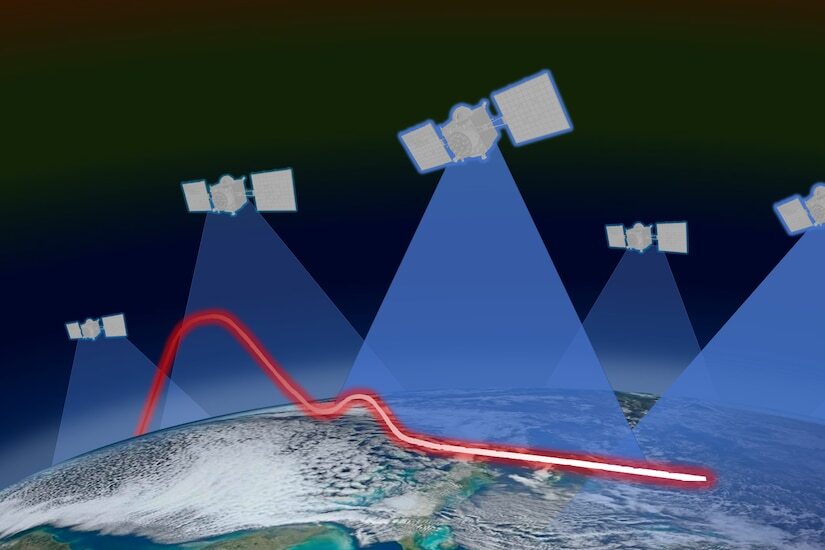1.04.2023
The first 10 of 28 satellites which make up Tranche 0 of the "Proliferated Warfighter Space Architecture," are set to launch tomorrow morning out of Vandenberg Space Force Base in California.

The Space Development Agency is responsible for the launch and for development of the Proliferated Warfighter Space Architecture. Tomorrow's group of satellites, which the SDA is also calling the "Warfighter Immersion Tranche," comes just four years after the SDA was stood up.
"We're pretty excited about that because this is the first dedicated SDA launch," Derek M. Tournear, director of the Space Development Agency, said. "All of the satellites on the rocket tomorrow will be SDA satellites and it's the first launch of the Proliferated Warfighter Space Architecture. We're right at two and a half years from order to orbit — so we're pretty excited to show that the model actually does work to be able to do that, that proliferation, to get the capabilities to the warfighter at speed."
The Proliferated Warfighter Space Architecture system will eventually include hundreds of satellites, delivered in "tranches" every two years, with each tranche providing more capability than the last.
The NDSA's network of hundreds of optically-connected satellites will deliver two primary capabilities to warfighters on the ground. The first is beyond line-of-sight targeting for ground and maritime time-sensitive targets, which includes mobile missiles and ships, for instance. The system will provide the ability to detect those targets, track them, calculate a fire control solution and then deliver that solution down to a weapons platform so that the target can be destroyed. The second capability is similar to the first, but for enemy missiles already in flight.
Following tomorrow's launch, those first ten satellites — eight of which are "transport layer" satellites and two of which are "tracking layer" satellites — will undergo calibration and their efficacy will also be evaluated with a series of tests.
"When they're first up there, they're going to go through a period of calibration and then after calibration, then they'll look for targets of opportunity ... launches that we're able to detect and track to help get calibration data," Tournear said.
Actual tracking test events designed by the SDA, using U.S.-flown aircraft, will come in spring of '24, Tournear said.
"On the transport side ... we have a lot of lower-level exercises that the warfighters are going to participate in to test everything out," Tournear said. "Most of those on the Link-16 side will start out with tests at Eglin Test and Training facility to demonstrate that, and really iron out all the bugs and figure out exactly how to do this connectivity with terrestrial Link-16 radios in space. And then we'll start to start to participate in some other exercises then in the Indo-Pacom region after that, primarily working with the Marines and some of their planned exercises."
That warfighters will be involved in working out how the Tranche 0 satellites can be used is why it's also called the "Warfighter Immersion Tranche," Mike Eppolito, the Tranche 0 program director, said.
"We are demonstrating the core architecture that will evolve in future tranches," Eppolito said. "The satellites that we have up there, the intent there is to get them in the warfighters hands so they can start developing their techniques to be able to use them, to give them the timeline to go through their training and to allow them to start thinking about how they would use the larger constellation once we have it an orbit. So ours is intended to be the demonstration tranche that allows them to sort of get their feet wet and start using the capabilities that we're putting on orbit."
The other 18 satellites that make up the 28 satellites in Tranche 0 are expected to launch in June. The SDA plans to launch new tranches of satellites every two years.
The Proliferated Warfighter Space Architecture involves seven layers, which include a mesh network of hundreds of optically interconnected satellites in orbit that make up its "transport" layer. There will also be tracking, custody, deterrence, navigation, battle management and support layers.
Quelle: U.S. The Department of Defense
